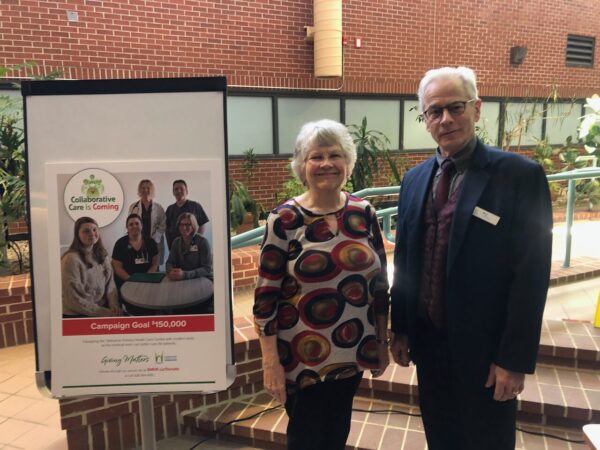
Last week, the Town of Amherst announced it had installed two EV ‘fast-charging’ stations behind Amherst town hall, just off Laplanche Street. In a news release, the town says the project cost about $23,000, an eye-popping number for anyone familiar with a Sackville-based project approved last year that will see a single fast charger installed for a much higher cost.
“The main difference between the two projects,” says Tantramar climate change coordinator Brittany Cormier, “is really summed up to the type of EV chargers and the electrical infrastructure, especially for our project.”
Most charging stations installed these days are either level 2 or level 3. Level 2 is slower, charging a car in anywhere from four to 8 hours, depending on conditions. Level 3 is much faster, using a different technology to charge cars in anywhere from 30 minutes to one hour.

While the Amherst project involves two level 2 chargers, downtown Sackville will be home to a level 3, or DC fast charger. In addition to being faster than a level 2 charger, level 3s are also much more expensive, and often require electrical infrastructure upgrades. Tantramar is buying a Flo charger, compatible with NB Power’s network, for a cost of $58,650. The electrical upgrades that need to happen in order for the Flo charger to be installed will cost another $118,203. The total project will cost just shy of $177,000, and with grants from NB Power and the provincial government, Tantramar will pay $72,567.
In Amherst, CAO Jason MacDonald says the town went for Level 2 chargers, mostly because that’s where funding was available. “The main consideration was the fact that there was a program where we could get a $5,000 per charger rebate from the government,” says MacDonald. “And it was for level 2 chargers only. So that’s what drove the decision to go level 2.”
Brittany Cormier says that in Sackville, the charging speed figured heavily into the rationale for the project. “The thought is that it could serve multiple users in a day,” says Cormier, “versus just one or two,” with a level 2 charger. Faster chargers encourage a quicker turnaround, and are a draw for EV travellers, says Cormier. “The chargers at Salisbury and the Magnetic Hill one in Moncton, they’re always backed up huge lines in the summertime,” says Cormier. “So once these get on the grid, it’s very easy for an EV user to identify which ones are the fast ones, so they can go for those.”
“The big piece and the big difference for this project comes down to the electrical infrastructure required,” says Cormier. For starters, the project includes a permanent power source for the purposes of the Fall Fair, a project that was budgeted itself at $10,000. In addition, the project was “designed to allow multiple EV chargers to be added after this is completed,” says Cormier. “It enables us to be opportunistic in the future as funding becomes available that we can apply to increase our EV infrastructure.”
That’s something electrician Zac Wheeler calls “future proofing.” Wheeler lives in Sackville where he owns and operates Wheeler Electric. He’s not an EV owner himself, yet, though he says he and his partner are considering that their next vehicle will be an EV. Wheeler has direct experience with EV chargers, having installed “probably 25 to 30” type two chargers at private homes throughout the Moncton and Sackville area.
Wheeler says he wasn’t surprised by the price of the downtown Sackville charger project, given that it’s a DC fast charger, and thinks the town made a wise choice going with the more expensive charger.
“I congratulate Sackville on going forward with a level 3,” says Wheeler. “I think it actually is a fantastic idea.”
Wheeler says he was happy to see the town step up to provide infrastructure downtown, to draw people off the highway for a different experience in ‘fuelling up’. “I just think that we [have] the opportunity to rework how this infrastructure works,” says Wheeler, “and we can make it something completely different from what it is now.”
Wheeler says the project also represents first steps. “We are going to need much more than just that within our town to maintain charging for EVs in the future,” he says.
Over in Amherst, Jason MacDonald is also hoping that the town’s new EV chargers draw people in off the highway. And he hasn’t ruled out a level 3 charger project for the future, depending on funding available.
“I’m sure that if programs become available, and they’re economically feasible for us, that we will look into that,” says MacDonald. “If the private sector decides or takes take some steps to provide those services, then we might not have to, but if they aren’t being provided, or if we need to do something to stimulate it, then we might be willing to do that.”
RELATED



















